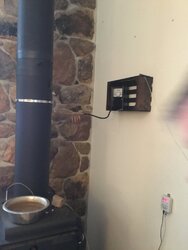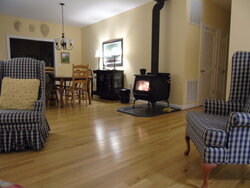showrguy
Minister of Fire
Chris told me they test 32" from stove top on my King, so that's where mine is..Is there any recommended method for connecting a manometer to your chimney?
BK spec’s .01 to .05 inches water column, but does not specify WHERE this is to be measured. One would assume in the stove pipe, as close to the flue connection as possible, but this could generate thermal constraints on most manometers and magnehelics.
Any recommendations on connection location? How about fittings for connecting to double-wall stove pipe? I’m thinking of boring a large hole thru outer wall, and then installing a bulkhead fitting in inner wall, but maybe someone has come up with a better method. Getting accuracy near 0.01” WC is not a trivial matter, it’s below the measurement accuracy range of most HVAC instrumentation.
I drilled a 1/ 4" hole through double wall, made a pigtail out of 1/4" copper, slid it in hole, mine is hooked up full time..





